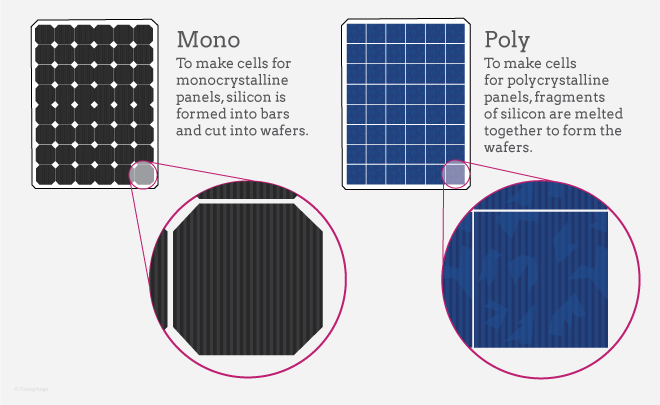BETTER TOUCH BETTER BUSINESS
Contact Sales at Litel Technology
When you evaluate solar panels for your photovoltaic (PV) system, you will encounter two main categories of panel options: monocrystalline solar panels (mono) and polycrystalline solar panels (poly). Both types of panels produce energy from the sun, but there are some key differences to be aware of.
Both monocrystalline and polycrystalline solar panels serve the same function in the overall solar PV system: they capture energy from the sun and turn it into electricity. They are also both made from silicon, which is used for solar panels because it is an abundant, very durable element. Many solar panel manufacturers produce both monocrystalline and polycrystalline panels.
Both monocrystalline and polycrystalline solar panels can be good choices for your home, but there are key differences between the two types of technology that you should understand before making your final solar purchase decision. The main difference between the two technologies is the type of silicon solar cell they use: monocrystalline solar panels have solar cells made from a single crystal of silicon, while polycrystalline solar panels have solar cells made from many silicon fragments melted together.
Monocrystalline solar panels are generally thought of as a premium solar product. The main advantages of moncrystalline panels are higher efficiencies and sleeker aesthetics.
To make solar cells for monocrystalline solar panels, silicon is formed into bars and cut into wafers. These types of panels are called “monocrystalline” to indicate that the silicon used is single-crystal silicon. Because the cell is composed of a single crystal, the electrons that generate a flow of electricity have more room to move. As a result, monocrystalline panels are more efficient than their polycrystalline counterparts.
Polycrystalline solar panels generally have lower efficiencies than monocrystalline options, but their advantage is a lower price point. In addition, polycrystalline solar panels tend to have a blue hue instead of the black hue of monocrystalline panels.
Polycrystalline solar panels are also made from silicon. However, instead of using a single crystal of silicon, manufacturers melt many fragments of silicon together to form the wafers for the panel. Polycrystalline solar panels are also referred to as “multi-crystalline,” or many-crystal silicon. Because there are many crystals in each cell, there is less
freedom for the electrons to move. As a result, polycrystalline solar panels have lower efficiency ratings than monocrystalline panels.

Copyright © 2025 Guangzhou Litel Technology Co.,Ltd. | All Rights Reserved
We are here to help you! If you close the chatbox, you will automatically receive a response from us via email. Please be sure to leave your contact details so that we can better assist